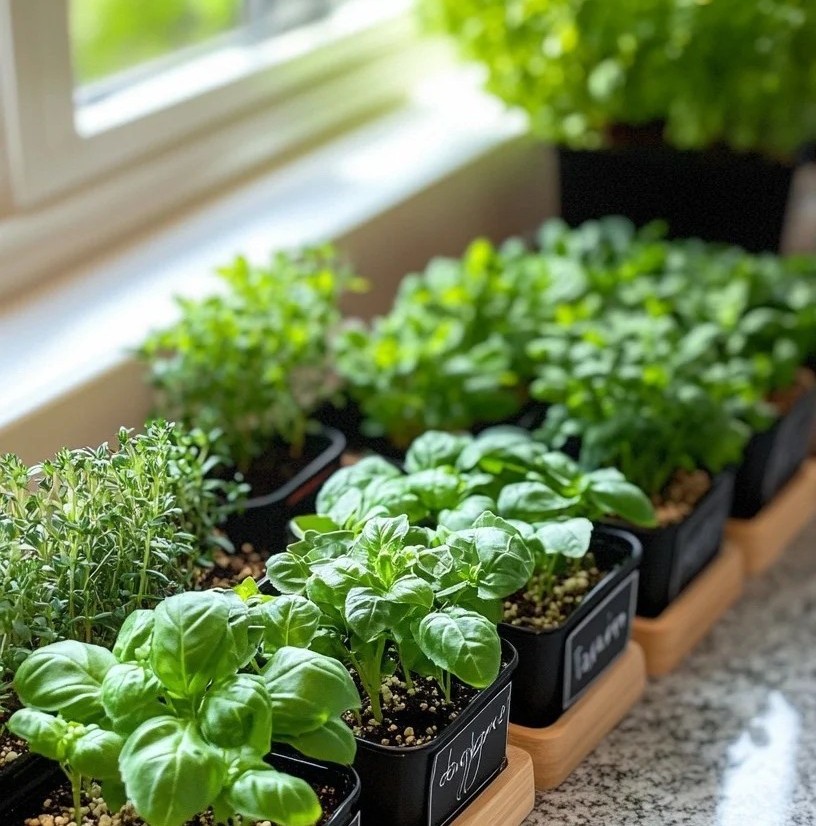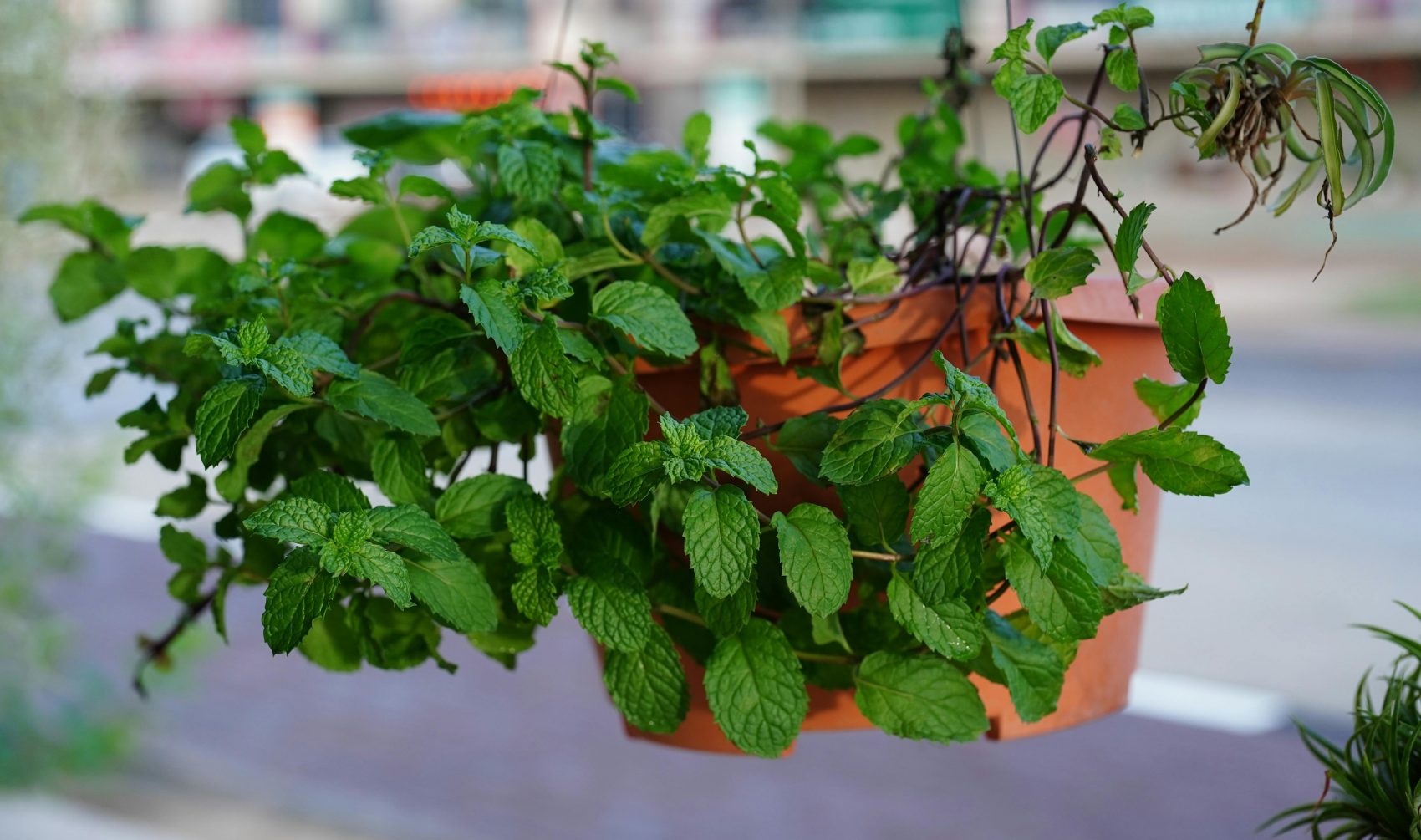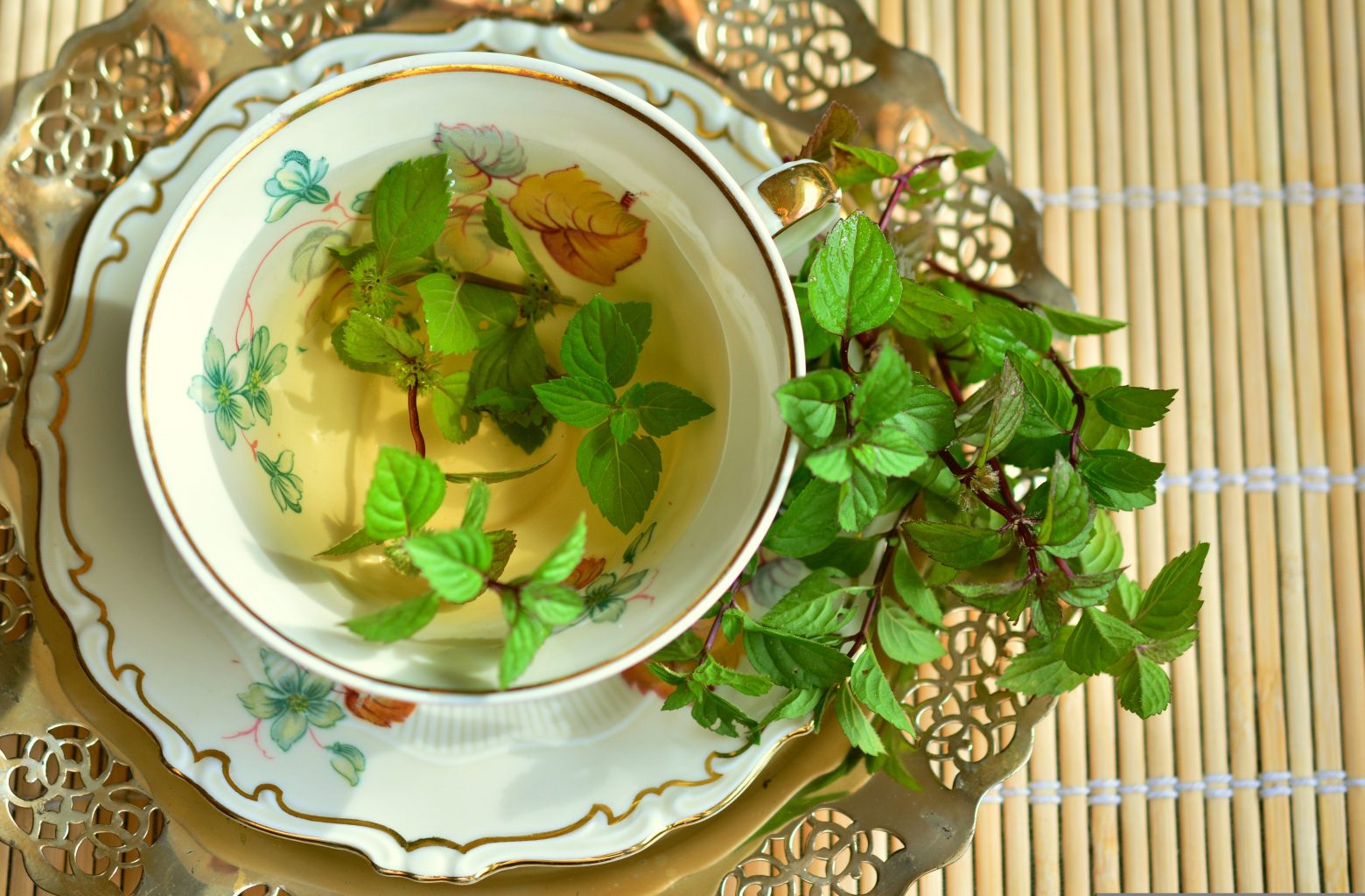Introduction to Herbs

A feast for the senses, herbs are infinitely beautiful and beneficial. Combing through scientific research, as well as folklore and mythology of the plant kingdom, it is apparent these life forms also display distinctive admirable “personality” characteristics.
As we delve into herbs in this next series, you may notice that your daily practice (self-cultivation) has helped you to be more aware, more conscious of your environment. With that in mind, these herbs for the most part will be those which can be grown indoors. Perhaps you’ll find yourself wanting to introduce a plant or two into your living or work space?

MINT
How would it be to live with mint?
Peppermints’ “personality” is associated with mercurial qualities, a kind of double-bodied signature. Aligned with the element of air, it can assist with both stimulation and relaxation. To get an idea of how that works, take your fingers and rub the top of your head for a quick moment. The effect is both stimulation and relaxation at the same time. Peppermint is wonderful for its cooling qualities in the summer but also its warming qualities in winter in teas and cold-remedies.
Historically linked with prosperity, abundance and good fortune, the sharp scent of mint can awaken your senses. Mint’s sunny disposition has a way of calming restless, nervous activity as well as stimulating slow, stagnant energy, bringing a balance of clarity and inspiration.

A little background….
The Lamiaceae family, of which mint is a member, is very large and includes herbs such as lavender, basil, catnip and lemon balm. The Mentha (Mint) genus has over 600 species.
Peppermint and spearmint are from different species in the Mentha genus. Peppermint is Mentha piperita and Spearmint is Mentha spicata. Although they share many similarities on the physical level, the differences in flavor is distinctive. A chemical ingredient called “carvone” gives spearmint its distinctive differentiating flavor.
It is the menthol in these plants that gives the “cooling” sensation when we feel it on our skin or taste it. This is not a true cooling because there is no actual change in temperature, but our sensory receptors interpret it as cooling!
Peppermint contains 40% menthol while spearmint has only .5%. Perhaps this is why peppermint traditionally used in herbal medicine preparations while spearmint is more often used as for flavoring food and drink.
Because of the high menthol content, fresh peppermint leaves or peppermint oil should not be given to small children. There are many edible mints, but not all of them. Pennyroyal mint (Mentha pulegrium) is one that is toxic to people as well as pets, although it does make a beautiful ground cover. In all cases, if you have any questions or are a total beginner, check with professionals such as garden centers and health care practitioners.
Mint is a prolific spreader and those who have planted it in their gardens learned the hard way that it will quickly take over any space it can access. It does make for a wonderful indoor plant, so check with your favorite gardening center.

Growing Mint Indoors:
Mint is a wonderful choice for beginners because it is one of the easiest perennial herbs to grow both indoors and out, giving year-round access to fresh mint leaves.
Here are a few key points to keep in mind:
- Buy transplants from a garden center or get a cutting from a friend instead of trying to start from seed.
- A plastic or ceramic container with a drainage hole is best because pots made of porous material (such as terra cotta) dry out much faster and these plants like to stay moist. Mint also does well in hanging planters.
- Some suggest purchasing a self-watering container because the optimal for mint plants is to stay moist, but not soggy. Self-watering containers take the guess work out for beginners. Otherwise, water when the top of the soil feels dry to the touch.
- Mint likes a wide surfaced container, at least 12 inches across. Mint roots are runners and if they are crowded, the roots tend to encircle themselves and choke the plant.
- Use a good potting mixture, there are some especially good for growing edible plants available.
- Light and warmth for your plant should also be considered – mint likes about 4 – 6 hours of sunlight and a temperature of 65 degrees F or higher. Give it a quarter turn of the container about once a week to even out exposure to sun.
- If you do not have a sunny window, growing lights work well too.

Harvesting Mint:
Once mint is established and growing, it is incredibly regenerative. Leaves can be removed at any time. Pinch or prune plants regularly to keep them from getting leggy. Cutting the stems forces the plant to send new shoots, a gift that keeps on giving. If flowers start to blossom, be sure to pinch them off to keep the leaves flavorful and growing.

How to use Mint:
Many of our culinary herbs such as oregano, rosemary, sage and thyme come from the same family as mint. The leaves of mint are ideal for chopping into salads, sprinkling over fruit or vegetables such as green beans, peas, carrots. A wonderful pesto is made from combining cilantro or basil with mint.

Mint tea is easy to make. Just steep fresh mint leaves in boiling water for about five minutes. You can dry mint leaves to use for tea also. The benefits are especially felt as a digestive aid or to reduce the effects of colds, flu or sinus congestion. It can be used as a poultice for stomach pains and on the chest for respiratory colds. Cold compresses applied to the forehead help reduce fever, headache, rashes and bug bites.

The number of cooling summer and warming winter drinks that incorporate mint is astounding.
A hair rinse can be made from mint/rosemary tea to one part cider vinegar as a conditioner which you can leave in or rinse out. The smell of vinegary dissipates after drying.
Facial astringent can be made by adding a few leaves of finely minced mint to a cup of witch hazel. Store it in a glass jar for at least a week, shaking occasionally. Then strain the herbs out and it is ready to use.

Mint can be added to any homemade beauty product, such as soap (image above).
Mouthwash can be made by chopping about ¼ cup fresh mint, lemon balm, basil, thyme or oregano leaves and letting them infuse in a quart of boiling water. After cooling, strain and store in fridge.
Mint bath – steep a handful of mint leaves in a pint of hot water for about 10 minutes, then strain. Add to your bath for an invigorating soak.
To relieve sunburn pain, make strong peppermint tea and refrigerate for a few hours – then apply gently to the area with cotton pads.

As you can see, bringing mints’ fresh and invigorating nature into your personal space can bring balance, purification and clarity.

